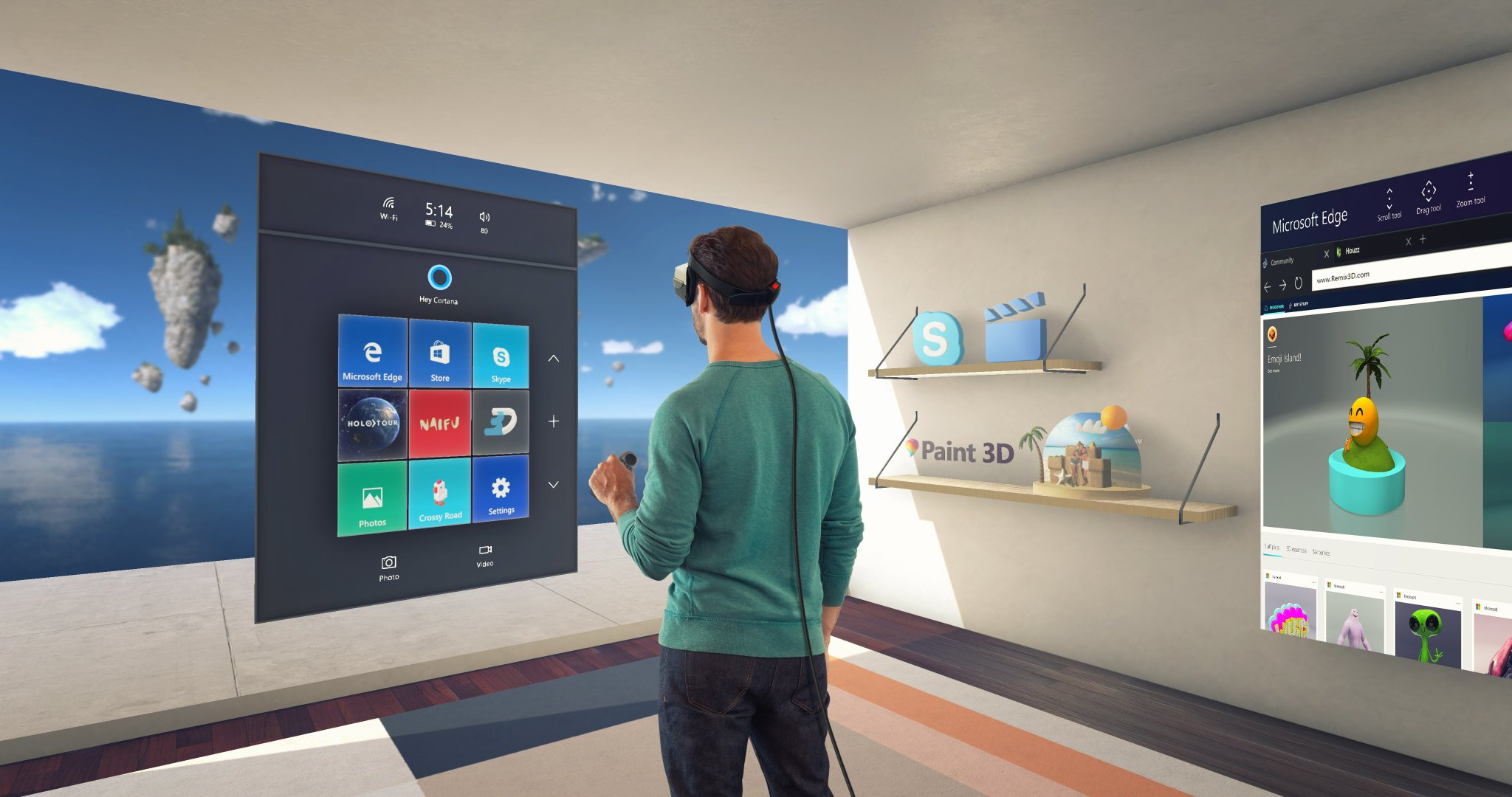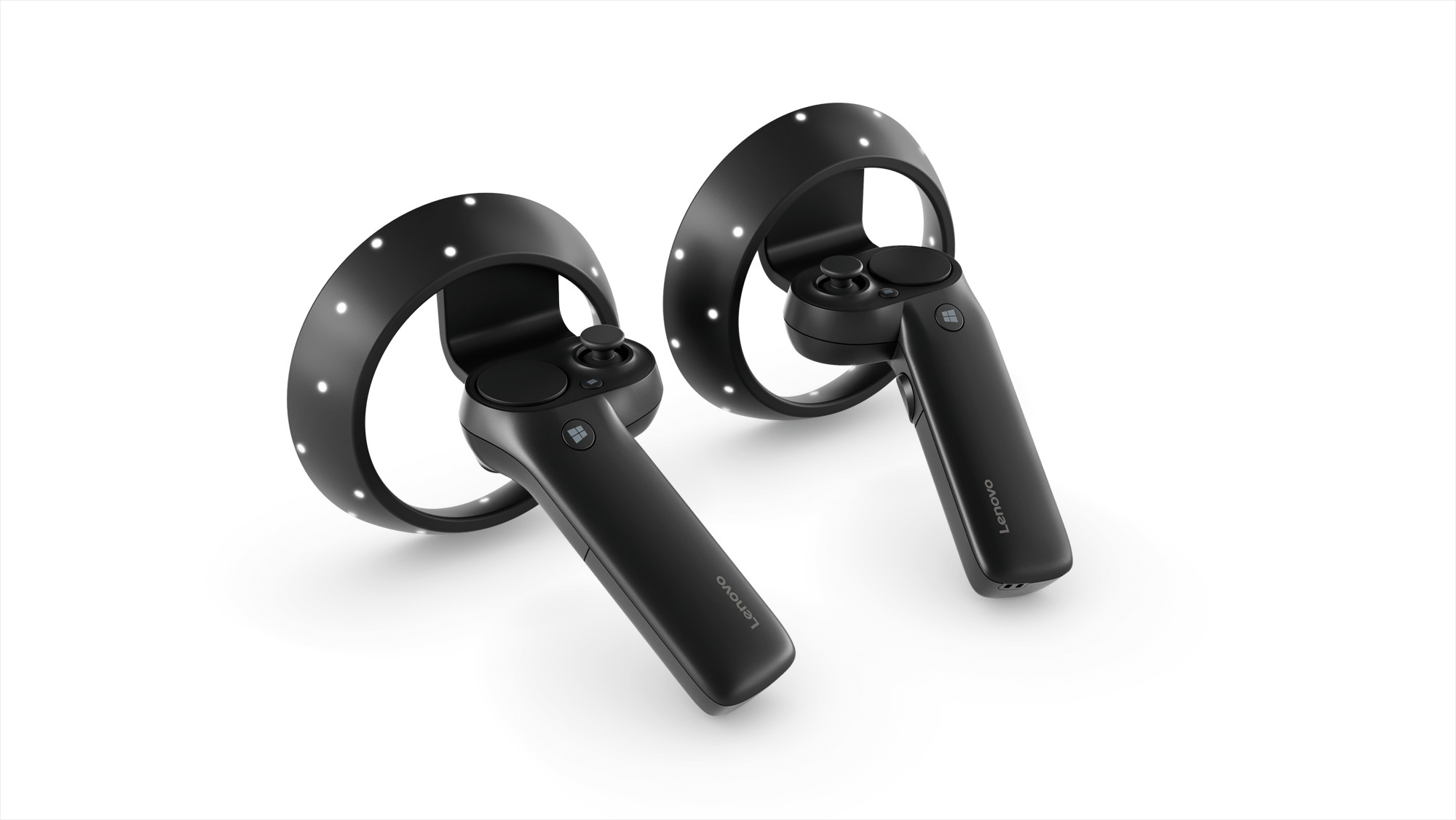Today sees the consumer launch of the third major PC VR platform; Windows VR.
Last year Facebook released its Oculus Rift headset with a dedicated platform while HTC and Valve introduced the Vive, powered by SteamVR as an extension of the existing Steam service. As part of today’s free Fall Creators Update for Windows 10, Microsoft is launching its own platform — officially dubbed “Windows Mixed Reality” — that supports multiple headsets made by some of the most recognized electronics manufacturers in the world.
Today, headsets from Acer, Lenovo, Dell and HP are all launching at prices between $399 and $449, and come complete with a new pair of motion controllers. These devices are largely similar in terms of specs (see our comparison chart) but, in early November, Samsung will also launch a premium Windows VR headset for $499 and Asus will release its own device in 2018 for an unannounced price. Whereas Oculus and Valve headsets utilize external sensors that must be placed around a room to provide six degrees of freedom (6DOF) tracking, these devices instead have sensors fitted to the headsets themselves. This is known as inside-out tracking, and it’s a big thing for VR.

This means users will be able to move through a virtual space without having to clutter their room with external sensors, and the 6DOF motion controllers are also tracked with these sensors. This is one of the first consumer-ready takes on inside-out tracking we’ve seen; Valve is doubling down on its Lighthouse tracking with improved base stations releasing in the coming months, and we won’t see Oculus’ take on the system until the launch of Santa Cruz, its prototype standalone headset that’s shipping to developers next year.
On day one, Windows VR customers will have access to their own virtual home, which serves as a hub world in which you can pin traditional apps like internet browsers and video playback software to walls as 2D screens that can be as big or as small as you choose. You’ll also be able to access the Windows Store and download native VR apps like Halo: Recruit, offering just a small taste of Microsoft’s famed gaming franchise in VR for the first time.
Later in the year, though, Microsoft and Valve will also release a preview of SteamVR support for Windows VR, meaning anyone with a headset will be able to access the hundreds of VR apps already on Steam and grow their library exponentially.

Crucially, Microsoft is allowing these devices to run on lower-spec systems than was required for the Rift and Vive. You can use a toolkit to check your system is up to scratch, but lower-spec systems will run headsets with a 60Hz refresh rate while better rigs will run them at 90Hz, the minimum framerate set for both Oculus and Vive apps.
We have plenty of questions about the arrival and future of Windows VR that largely remain unanswered. At cheaper prices, will these be enough to disrupt the $399 Rift and $599 Vive? Will the inside-out tracking solution prove as dependable as established outside-in systems? What major apps are coming, and what does this mean for possible VR support on Microsoft’s incoming Xbox One X console?
We’ll look to answer these questions and more in the coming days and weeks.

























